
How to Use MOSFET: Examples, Pinouts, and Specs
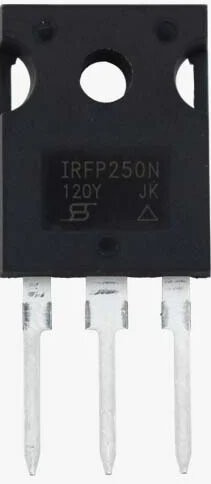
 Design with MOSFET in Cirkit Designer
Design with MOSFET in Cirkit DesignerIntroduction
The IRFP250N is a high-power N-channel Metal-Oxide-Semiconductor Field-Effect Transistor (MOSFET) manufactured by Infineon Technologies. It is designed for use in high-efficiency switching applications and power amplification circuits. With its low on-resistance, high current-handling capability, and fast switching speed, the IRFP250N is ideal for applications such as motor control, power supplies, inverters, and audio amplifiers.
Explore Projects Built with MOSFET
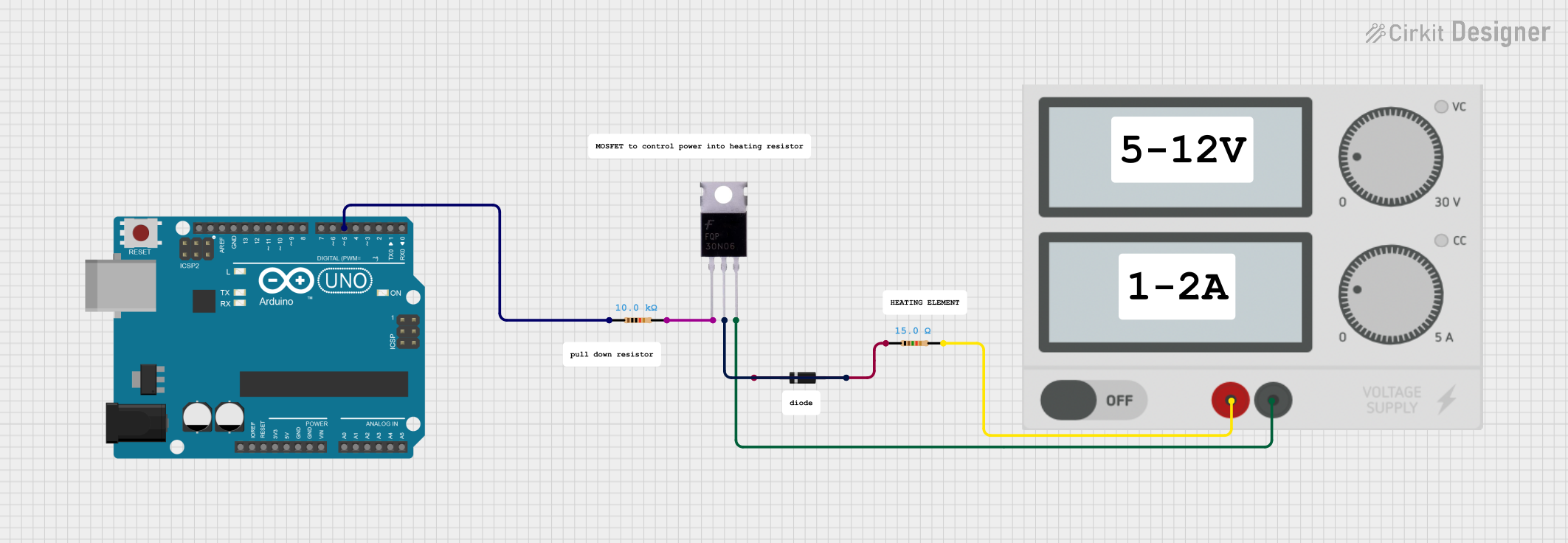
 Open Project in Cirkit Designer
Open Project in Cirkit Designer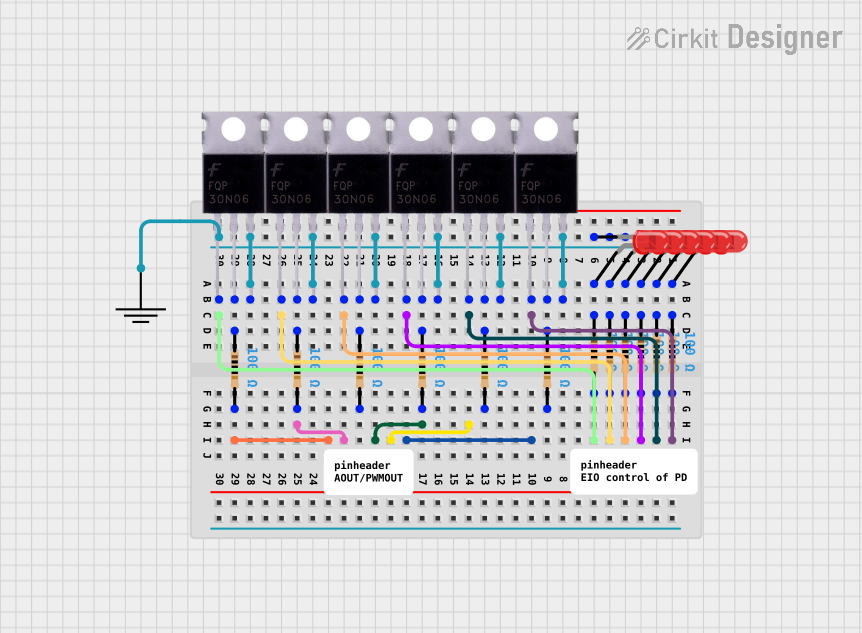
 Open Project in Cirkit Designer
Open Project in Cirkit Designer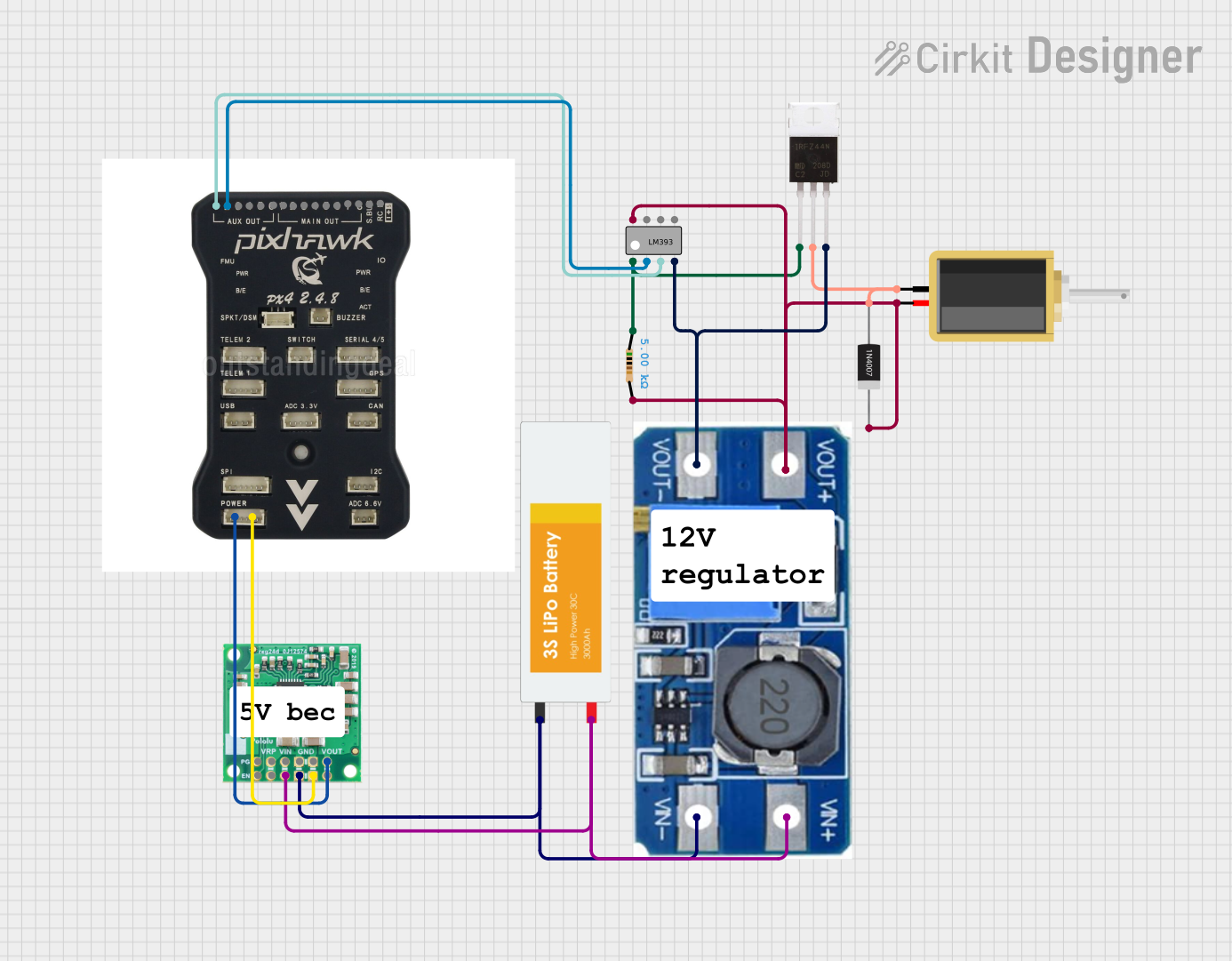
 Open Project in Cirkit Designer
Open Project in Cirkit Designer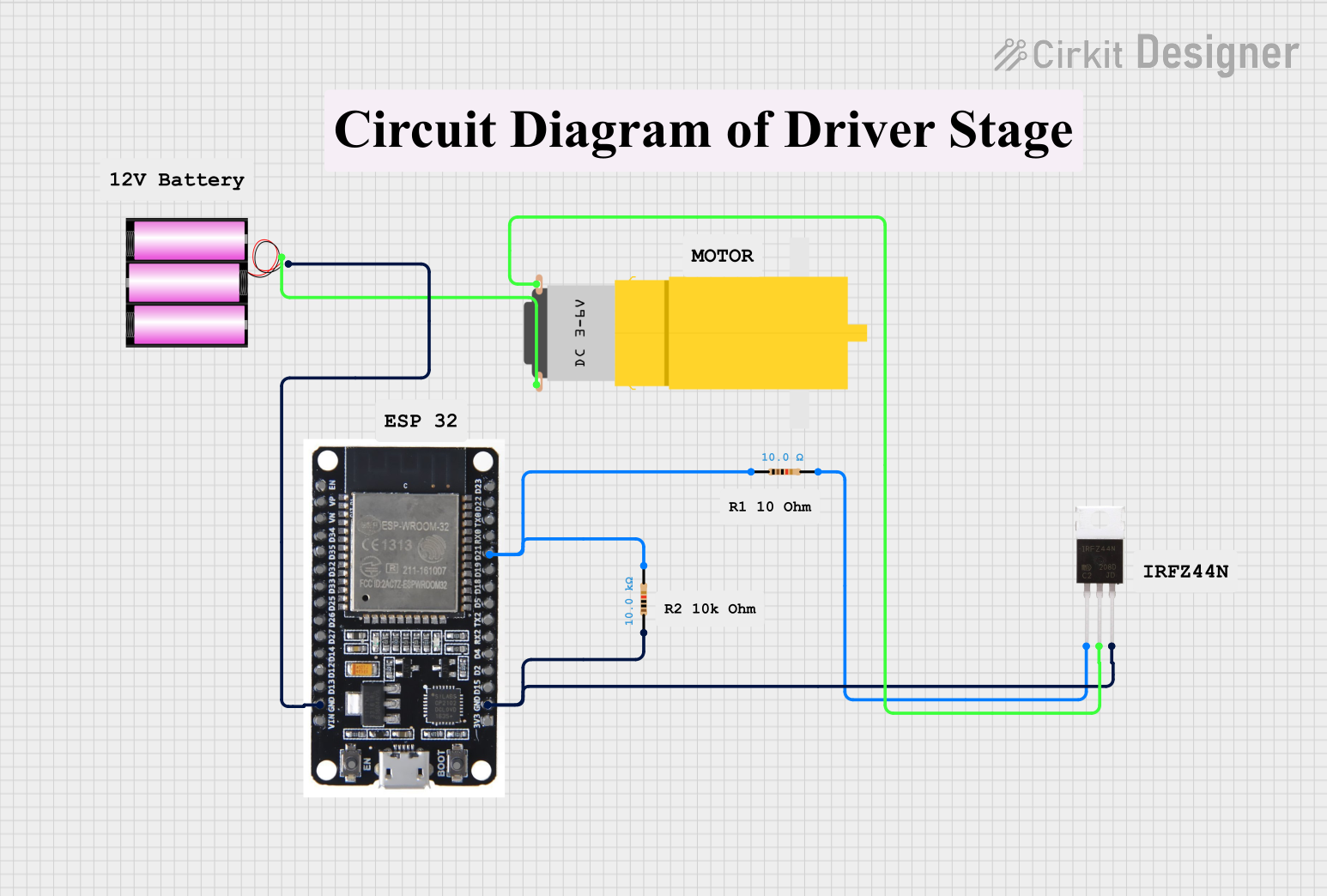
 Open Project in Cirkit Designer
Open Project in Cirkit DesignerExplore Projects Built with MOSFET

 Open Project in Cirkit Designer
Open Project in Cirkit Designer
 Open Project in Cirkit Designer
Open Project in Cirkit Designer
 Open Project in Cirkit Designer
Open Project in Cirkit Designer
 Open Project in Cirkit Designer
Open Project in Cirkit DesignerCommon Applications
- DC-DC converters
- Motor drivers
- Uninterruptible Power Supplies (UPS)
- Solar inverters
- High-frequency switching circuits
Technical Specifications
The following table outlines the key technical specifications of the IRFP250N MOSFET:
| Parameter | Value | Unit |
|---|---|---|
| Drain-Source Voltage (VDS) | 200 | V |
| Continuous Drain Current (ID) | 30 | A |
| Pulsed Drain Current (IDM) | 120 | A |
| Gate-Source Voltage (VGS) | ±20 | V |
| Power Dissipation (PD) | 200 | W |
| RDS(on) (Max) | 0.075 | Ω |
| Operating Temperature Range | -55 to +175 | °C |
| Package Type | TO-247 | - |
Pin Configuration
The IRFP250N MOSFET has three terminals: Gate (G), Drain (D), and Source (S). The pinout for the TO-247 package is as follows:
| Pin Number | Pin Name | Description |
|---|---|---|
| 1 | Gate (G) | Controls the MOSFET switching |
| 2 | Drain (D) | Current flows into this terminal |
| 3 | Source (S) | Current flows out of this terminal |
Usage Instructions
How to Use the IRFP250N in a Circuit
- Gate Drive Voltage: Ensure the gate voltage (VGS) is within the specified range (±20V). For optimal performance, a gate voltage of 10-15V is recommended.
- Load Connection: Connect the load between the drain and the positive supply voltage for high-side switching, or between the source and ground for low-side switching.
- Gate Resistor: Use a gate resistor (typically 10-100Ω) to limit the inrush current and prevent damage to the gate.
- Heat Dissipation: The IRFP250N can handle high power, so ensure proper heat sinking or cooling to prevent overheating.
- Protection: Add a flyback diode across inductive loads to protect the MOSFET from voltage spikes during switching.
Example Circuit with Arduino UNO
The IRFP250N can be used with an Arduino UNO to control a DC motor. Below is an example circuit and code:
Circuit Description
- Connect the Gate of the IRFP250N to a PWM pin on the Arduino (e.g., pin 9) through a 100Ω resistor.
- Connect the Source to ground.
- Connect the Drain to one terminal of the motor, and the other terminal of the motor to the positive supply voltage.
- Add a flyback diode (e.g., 1N4007) across the motor terminals to protect the MOSFET.
Arduino Code
// IRFP250N MOSFET Control Example
// This code uses PWM to control the speed of a DC motor.
const int pwmPin = 9; // PWM pin connected to the Gate of the MOSFET
void setup() {
pinMode(pwmPin, OUTPUT); // Set the PWM pin as an output
}
void loop() {
// Gradually increase motor speed
for (int dutyCycle = 0; dutyCycle <= 255; dutyCycle++) {
analogWrite(pwmPin, dutyCycle); // Write PWM signal to the MOSFET Gate
delay(10); // Wait for 10ms
}
// Gradually decrease motor speed
for (int dutyCycle = 255; dutyCycle >= 0; dutyCycle--) {
analogWrite(pwmPin, dutyCycle); // Write PWM signal to the MOSFET Gate
delay(10); // Wait for 10ms
}
}
Important Considerations
- Gate Drive Requirements: Ensure the gate voltage is sufficient to fully turn on the MOSFET. Logic-level MOSFETs may be required for low-voltage control.
- Thermal Management: Use a heat sink or active cooling to manage heat dissipation during high-power operation.
- Switching Speed: Minimize gate capacitance effects by using a proper gate driver circuit for high-frequency applications.
Troubleshooting and FAQs
Common Issues
MOSFET Overheating
- Cause: Insufficient heat dissipation or improper gate drive voltage.
- Solution: Use a heat sink and ensure the gate voltage is within the recommended range.
MOSFET Not Switching
- Cause: Gate voltage too low or incorrect wiring.
- Solution: Verify the gate voltage and check the circuit connections.
High Power Loss
- Cause: High RDS(on) or insufficient gate drive.
- Solution: Ensure the MOSFET is fully turned on by applying the correct gate voltage.
FAQs
Q: Can the IRFP250N be used for high-frequency switching?
A: Yes, but ensure a proper gate driver circuit is used to minimize switching losses and handle the gate capacitance.
Q: What is the maximum current the IRFP250N can handle?
A: The IRFP250N can handle up to 30A continuously and 120A in pulsed mode, provided proper cooling is implemented.
Q: Is the IRFP250N suitable for low-voltage applications?
A: The IRFP250N is optimized for high-power applications. For low-voltage applications, consider using a logic-level MOSFET.
By following the guidelines and recommendations in this documentation, users can effectively integrate the IRFP250N MOSFET into their electronic designs.